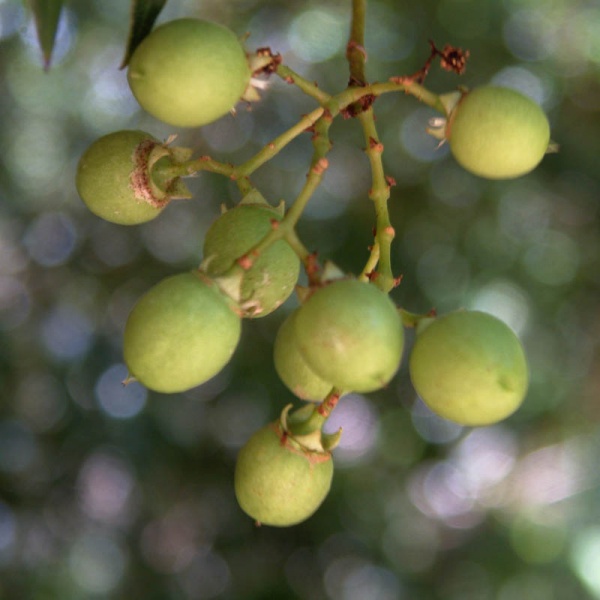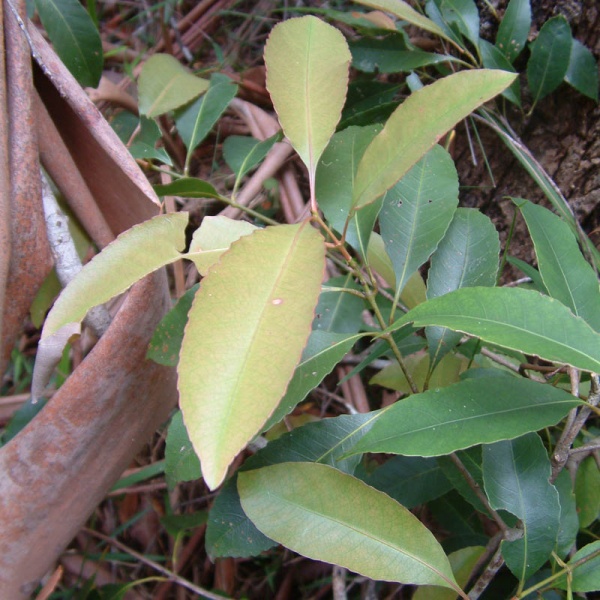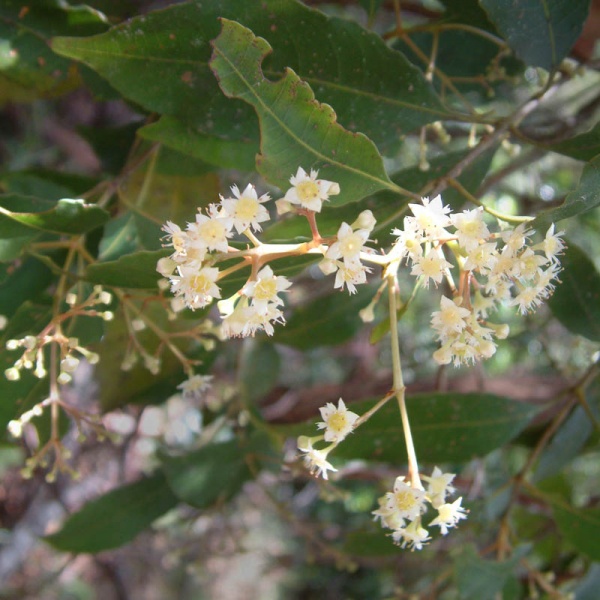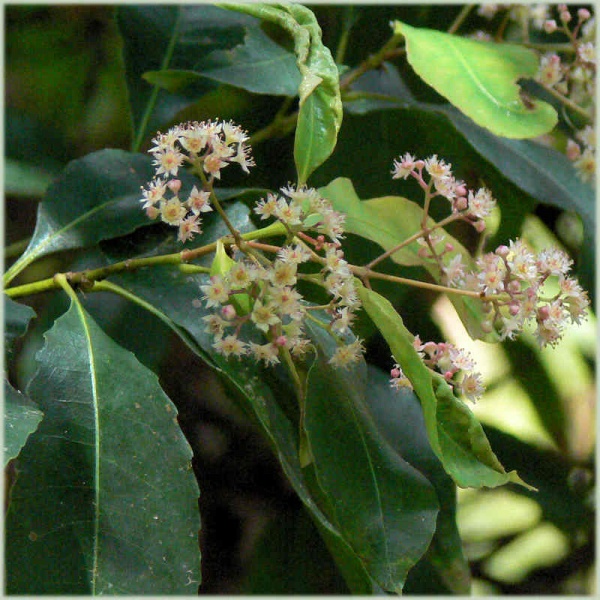Scientific Name: Schizomeria ovata
-
Pronunciation:skits-oh-MEER-ee-ah oh-VAR-tah
-
Common Name:Crabapple, White Cherry, White Birch




-
Derivation:Schizomeria: Gr. schizo - split, Gr. meria - a part. (petals look as if pieces have been cut out) ovata: egg-shaped
-
Type:
-
Family:CUNONIACEAE
-
Flowers:May to November, white in panicles, 5 petals
-
Fruit:white, sour, edible 15 mm Creamy-white or yellow, globular to apple-shaped drupes. Ripe April to July.
-
Vegetation Type:Distribution: Mt Dromedary, south-east NSW to Fraser Island, south-east Qld. Habitat: Subtropical, Temperate and ecotonal forest. Sub tropical Rainforest along moist scrubby watercourses and wet open forest,
-
Species List:Hedges, Bush food, FI Podberscek, Fraser Island, Batianoff 87, Upper Yandina Creek, NNP Palm Grove, Stratford Park, Heritage Park
Cultural Notes
TAKE CARE! Some information about bush foods and medicines may be anecdotal. Correct identification and preparation is essential:
Bush food: Completely ripe white fruits taste pleasantly sour, juicy and refreshing.
Timber: The ceiling, upper walls and seats of the Concert Hall of the Sydney Opera House are panelled with white birch (Schizomeria ovata) plywood/veneer.
Identification Notes
Stipules present, leaving transverse scars at leaf nodes; terminal buds smooth, enclosed in stipules; fruit white globular drupe|| LEAVES: Leaves ovate to elliptic, mostly 5-15 cm long, 2-5 cm wide (larger on juvenile shoots), apex acute to broad-acuminate, margins bluntly toothed to almost entire, leathery; petiole 5-30 mm long; stipules 2-3 mm long|| BARK: finely fissured hard-corky bark. || TRUNK: often buttressed||
Associated Fauna
Prized food of topknot pigeons. Fruit eaten by rainforest fruit-eaters||
Landscaping Notes
This tree gets to between 10-15 metres when grown in the open and has dense foliage with attractive new growth. Requires a sheltered site for best establishment.||Excellent bushy screen with bird-attracting fruit.||Seed difficult to germinate but will grow readily from cuttings.||Hardy in cool conditions, shade and a variety of soil types.||Successfully propagated by Barung Landcare||



